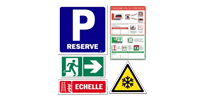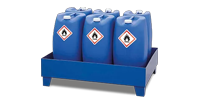Safety gloves are an essential personal protective equipment to protect workers’ hands from mechanical and chemical hazards. European standards for safety gloves, such as EN 420, define the general requirements for the design and sizes of protective gloves. In this article, we will take a closer look at the EN 420 standard, its objectives, requirements, and its importance for the safety of your employees.
What is the EN 420 standard?
The EN 420 standard is a French and European standard that regulates personal protective equipment related to hand and arm protection. Specifically, the EN 420 certification governs the general requirements and test methods related to safety gloves and protective gloves. The specificity of this standard lies in its inability to be used alone. Indeed, it dictates the general requirements for safety gloves and protective gloves, however, it is systematically coupled with another standard. This complementary standard is specific to the pair of safety gloves and its characteristics (e.g. heat protection, cut protection, chemical protection, etc.).
As you may have understood, the EN 420 standard is generic. Its goal is to regulate and harmonize all safety gloves, regardless of their category. This standard therefore influences the fundamental design requirements for a safety or protective glove. The fundamental requirements consist of six criteria:
- Size;
- Comfort;
- Dexterity;
- Identification;
- Harmlessness;
- Permeability.
EN 420 Requirements
As previously explained, all safety and protection gloves are subject to the same standard: EN 240. This standard governs their design. Here are the six requirements in detail.
Identification:
Like many consumer products, specific products must also include information about their origin. This is also the case for safety gloves and protection gloves. Thus, individual protective equipment relating to hand and arm protection must visibly and permanently display the following elements:
- Name of the manufacturer;
- The glove size;
- CE marking;
- Manufacturer’s designation;
- Mention of the obtained standards.
Harmlessness
Harmlessness of safety and protection gloves is essential to avoid any risk of irritation, allergy, or intoxication for users. To ensure their harmlessness, manufacturers must ensure that gloves do not contain any dangerous chemical substances, such as heavy metals or carcinogenic products. In this sense, the chrome content must be below the detection threshold, that is, 3 mg/kg. Similarly, the pH must be neutral, that is, it must be between 3.5 and 9.5. Finally, stemming from EN 455-3 standard, the protein content must also be tested in accordance with this same standard.
European standards for safety gloves include requirements for the harmlessness of materials used to ensure the safety and health of workers who use them. Manufacturers of protection gloves must therefore take into account the chrome content, pH, and protein content in their design, to ensure the safety and protection of workers.
Respecting sizes
Sizes also represent an obligation for display. The EN 420 standard requires the display of European sizes in order to make reading the article as simple as possible. Below is the official size guide:
| Sizes | Palm circumference | Hand length | Glove length |
|---|---|---|---|
| Size 6 | 152 mm | 160 mm | 220 mm |
| Size 7 | 178 mm | 171 mm | 230 mm |
| Size 8 | 203 mm | 182 mm | 240 mm |
| Size 9 | 229 mm | 192 mm | 250 mm |
| Size 10 | 254 mm | 204 mm | 260 mm |
| Size 11 | 279 mm | 215 mm | 270 mm |
When you or your team are required to perform precise or non-precise tasks that require the use of safety gloves or protective gloves, dexterity can be a critical element. In this regard, the EN 420 standard provides for a test to determine the level of dexterity of the glove. The test consists of grasping a pin 3 times in 30 seconds, the size of the pin varying to precisely determine the level of dexterity. Below is the classification of performance levels:
| Level 1 | Level 2 | Level 3 | Level 4 | Level 5 | |
|---|---|---|---|---|---|
| Pin Length | 11 mm | 9.5 mm | 8 mm | 6.5 mm | 5 mm |
Thus, you will be able to choose an almost at first glance a dexterity level adapted to your needs.
Permeability
The water vapor permeability rule of protective gloves of the EN 420 standard defines the requirements related to the gloves’ capacity to resist or not to the penetration of water vapor. Protective gloves must be tested to evaluate their resistance to permeation. Thus, for specific gloves, the transmission of water vapor is fixed at 5 mg/cm2/h for 8 hours against 8 mg/cm2/h for more conventional safety gloves.
Comfort
The comfort of safety gloves should never outweigh their resistance. Also, for gloves with seams, their strength should not compromise the overall performance offered by the glove. The glove should be as comfortable as possible without altering the glove’s performance.
For manufacturers and employers, complying with the EN 420 standard means using safe and non-toxic materials, as well as environmentally-friendly manufacturing processes, whenever possible. Manufacturers must also be able to trace the materials used in the production of their gloves at all times, to ensure their quality and compliance with the EN 420 standard.
Furthermore, manufacturers of safety gloves have a responsibility to provide clear and accurate information on the use, maintenance, and storage of their gloves, to ensure their effectiveness and durability. They are also required to provide detailed instructions on the testing methods used to assess the gloves’ resistance to mechanical and chemical risks, as well as on the methods of marking and labeling protective gloves in accordance with the requirements of the EN 420 standard.
Finally, manufacturers of safety gloves must be able to respond to information requests from users and competent authorities regarding the compliance of their products with the requirements of EN 420. They must also be able to guarantee the quality and safety of their products by conducting regular quality checks and ensuring compliance of the protective gloves they manufacture. Thus, safety glove manufacturers have a significant responsibility to customers and users by providing high-quality, safe, and compliant personal protective equipment to ensure their safety and health in the workplace.
In addition, complying with EN 420 regulations allows a safety glove manufacturer to comply with regulatory requirements in force in the European Union for personal protective equipment. This enables them to meet the requirements of customers who are looking for reliable and safe personal protective equipment. Moreover, this can greatly enhance the brand image and, in turn, the brand awareness by attracting new customers.
Finally, compliance with the EN 420 standard can also help to reduce the costs associated with disputes and claims from users in case of work accidents related to insufficient hand protection. By providing protective gloves that comply with the applicable standards, safety glove manufacturers can reduce the risks of work accidents and associated costs while contributing to the safety and health of their customers.
The implications of the EN 420 standard for workers
Firstly, safety gloves are designed to offer effective and reliable hand protection against various risks of hand accidents. The general requirements for the design and sizes of protective gloves set by the EN 420 standard ensure that safety gloves are suitable for their intended use, offer good dexterity, appropriate ergonomics, optimal comfort and compatibility with other personal protective equipment.
In addition, the use of safety gloves that comply with the EN 420 standard can help to reduce the risks of work accidents and occupational hand diseases. Indeed, safety gloves undergo rigorous testing methods to assess their resistance. Therefore, this can greatly improve workers’ productivity. By providing effective hand protection, safety gloves allow users to concentrate on their work without having to fear hand-related occupational hazards, which can have a positive impact on the overall productivity of the company.
The dexterity of safety gloves is a key element for their users, as it allows them to handle objects and tools with precision and without hindrance. Ill-fitting or unsuitable safety gloves could reduce the dexterity of workers, leading to errors and potentially workplace accidents. The comfort of safety gloves is also important for the productivity of employees, as uncomfortable safety gloves could cause long-term hand fatigue and pain, and thereby affect productivity.
Ultimately, safety gloves that conform to the EN 420 standard are designed to offer optimal dexterity and comfort while providing adequate hand protection against workplace risks and a precise fit that conforms to the shape of the hand.
EN 420 Standard: The Key to Compliant Safety Gloves
As you have understood, the EN 420 standard is a generic standard that applies to all safety and protective gloves. Its requirements ensure a certain level of safety and traceability. Additionally, this standard complements other standards that have a specific purpose for each type of glove. Therefore, discover below the complementary standards to the EN 420 certification:
- EN 407: Protection against thermal hazards from fire;
- EN 388: Prevents mechanical risks (anti-cut tested gloves for handling);
- EN 511: Protection against thermal hazards from cold;
- EN 374: Regarding chemical and industrial risks.
In conclusion, if you wish to market or purchase safety gloves within the European Union, you are required to comply with the EN 420 standard. This ensures optimal protection against the risks associated with manual work.
Discover our wide range of safety gloves that comply with the EN 420 standard!
Please note that our teams are available from Monday to Friday to answer any questions you may have about our products, their use, and their standard(s): Contact us.


















